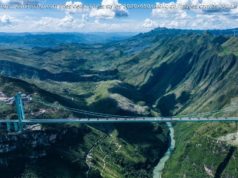US bombers fly over East and South China Seas
Two U. S. bombers flew over the East and South China Seas on Thursday in a direct challenge to China.
The B-1B Lancers flew from Andersen Air Force Base in Guam to the East China Sea, linking up with Japanese fighters in what was the first time U. S. Pacific Command-directed Lancers conducted training with Japanese partners at night, according to the Air Force.
The training mission occurred the day before President Trump and Chinese President Xi met at the G-20 summit in Germany.
Flying over the East China Sea challenges China’s Air Defense Identification Zone (ADIZ) , a 200-mile airspace off the coast of China that requires aircraft to identify themselves.
The U. S. does not recognize China’s ADIZ in the East China Sea. It does, however, recognize those of South Korea and Japan.
This is not the first time the U. S. has flown B-52 bombers over the East China Sea to oppose China’s restrictions on that airspace.
In a further challenge to China, the B-1B Lancers and Japanese fighters continued their flight south over the South China Sea where China claims the Spratly Islands.
The Philippines, Malaysia, Vietnam and Taiwan all claim to occupy portions of the island chain. This area of ocean is valuable for its fisheries and possible oil and gas reserves. In recent years, China has been building ports, runways and radar facilities on several of the manmade islands, a move other nations have condemned.
For its part, the U. S. has continuously sailed through and flown over the South China Sea to ensure its right of passage through international waters and airspace.
„The recent mission demonstrates how the U. S. will continue to exercise the rights of freedom of navigation anywhere international law allows, “ Pacific Air Force said in a statement on Friday. „These actions are consistent with long-standing and well-known U. S. freedom of navigation policies that are applied to military operations around the world.“






